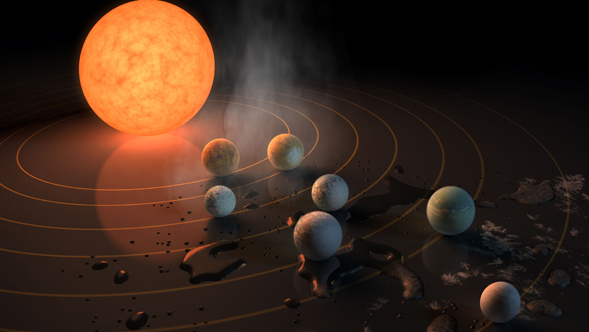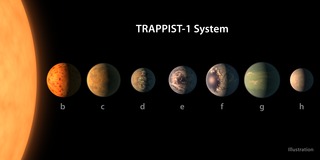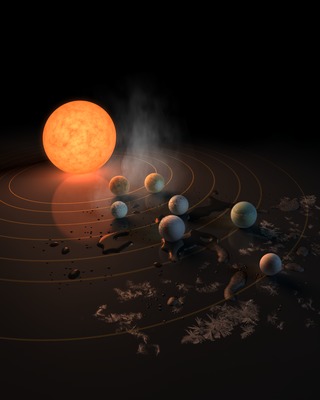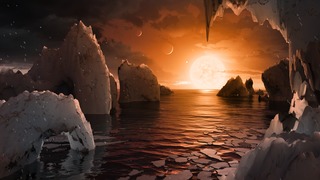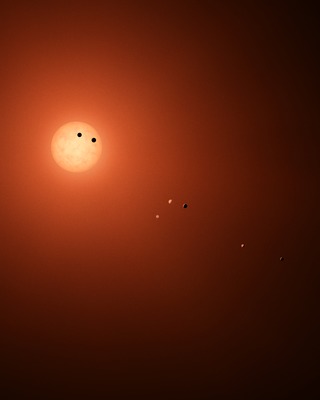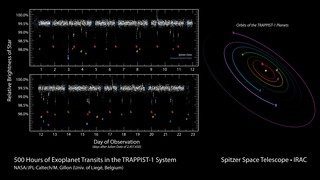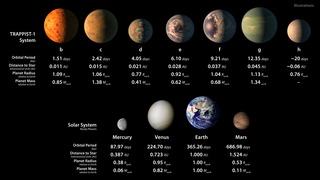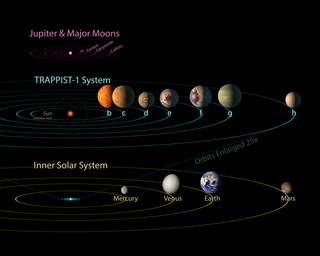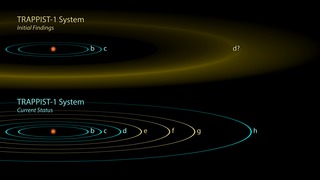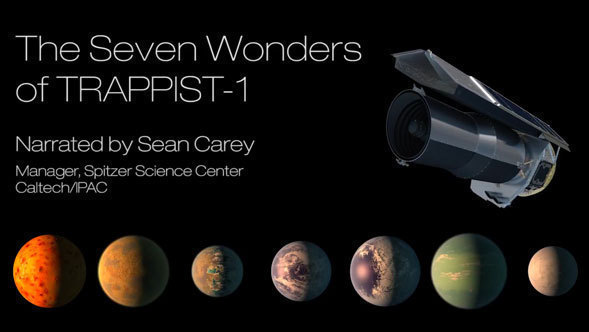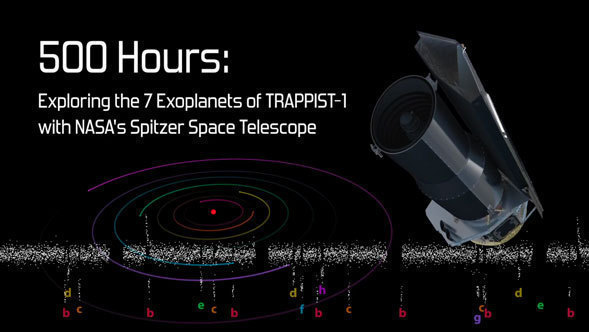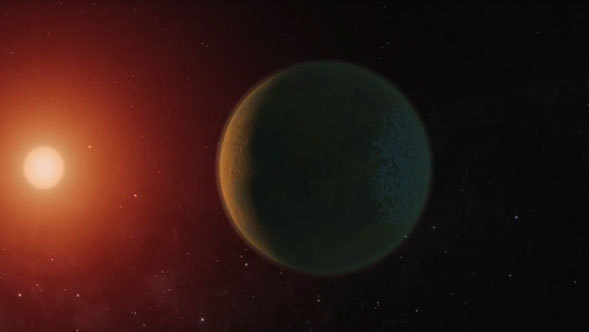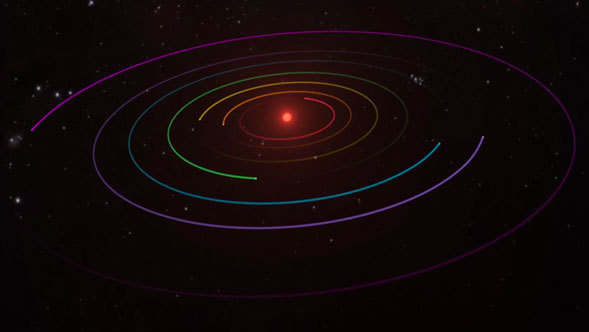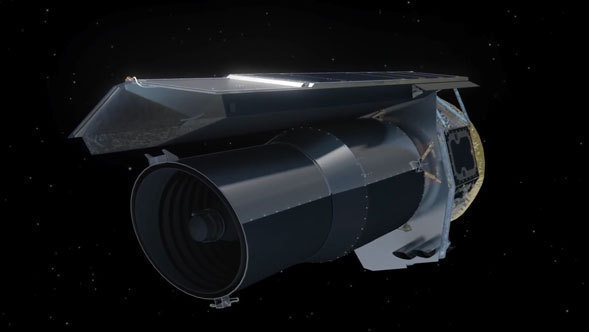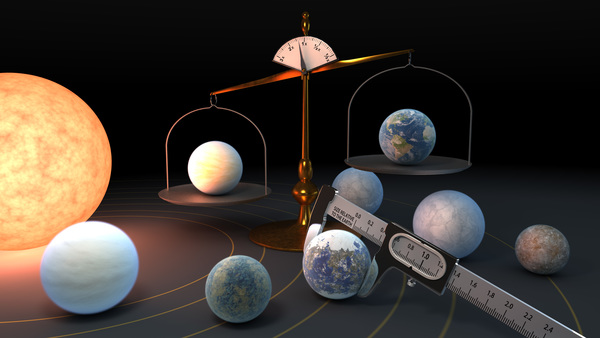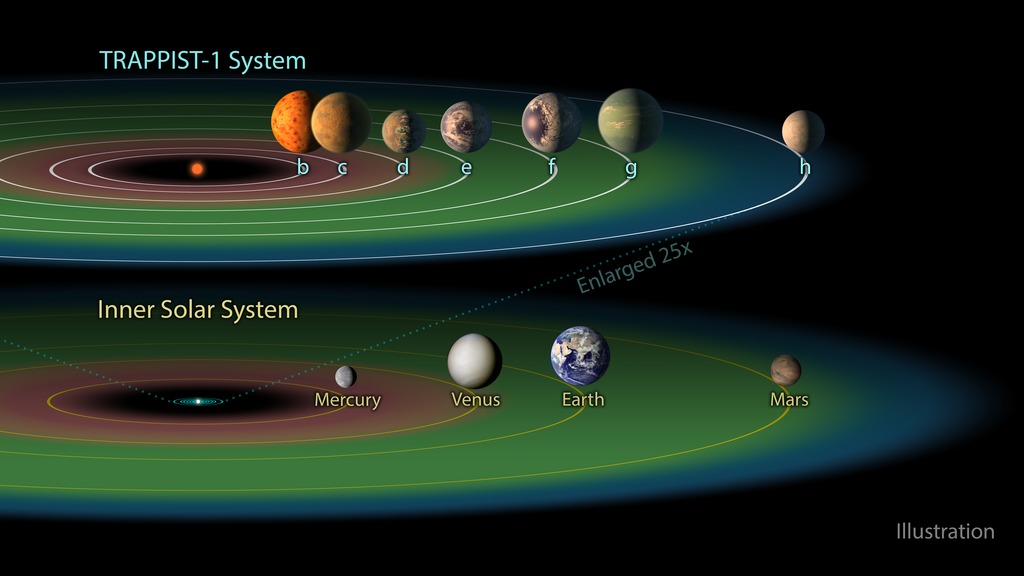
Chart • February 22nd, 2017 • ssc2017-01h
ssc2017-01h
The TRAPPIST-1 system contains a total of seven planets, all around the size of Earth.Three of them -- TRAPPIST-1e, f and g -- dwell in their stars so-called habitable zone. The habitable zone, or Goldilocks zone, is a band around every star (shown here in green) where astronomers have calculated that temperatures are just right -- not too hot, not too cold -- for liquid water to pool on the surface of an Earth-like world.
While TRAPPIST-1b, c and d are too close to be in the systems likely habitable zone, and TRAPPIST-1h is too far away, the planets discoverers say more optimistic scenarios could allow any or all of the planets to harbor liquid water. In particular, the strikingly small orbits of these worlds make it likely that most, if not all of them, perpetually show the same face to their star, the way our moon always shows the same face to the Earth. This would result in an extreme range of temperatures from the day to night sides, allowing for situations not factored into the traditionalhabitable zonedefinition. The illustrations shown for the various planets depict a range of possible scenarios of what they could look like.
The system has been revealed through observations from NASA's Spitzer Space Telescope and the ground-based TRAPPIST (TRAnsiting Planets and PlanetesImals Small Telescope) telescope, as well as other ground-based observatories. The system was named for the TRAPPIST telescope.
NASA's Jet Propulsion Laboratory, Pasadena, California, manages the Spitzer Space Telescope mission for NASA's Science Mission Directorate, Washington. Science operations are conducted at the Spitzer Science Center at Caltech in Pasadena. Spacecraft operations are based at Lockheed Martin Space Systems Company, Littleton, Colorado. Data are archived at the Infrared Science Archive housed at Caltech/IPAC. Caltech manages JPL for NASA.
About the Object
- Name
- TRAPPIST-1
- Type
- Planet > Type > Terrestrial
- Distance
- 40 Light Years
